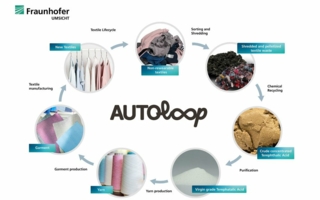12/02/2024 – Persistence Market Research
Crossbreeding in the wool yarn market
The global wool yarn market reached at nearly US$ 38,500 million in 2023, and is projected to grow at a CAGR of over 4% till year 2029, according to report by Persistence Market Research (PMR).
In this era of innovation, the traditional meets the modern as crossbreeding breathes new life into the wool yarn market, unlocking avenues of growth that were once deemed unreachable. End users in the textile industry are no longer content with the status quo. This quest for superior quality has paved the way for crossbreeding to emerge as a game-changer in the wool yarn industry.
Breaking tradition, embracing innovation
Traditionally, purebred wool has been the hallmark of quality in the industry. However, manufacturers are rewriting the rules by introducing crossbred wool yarns that offer a blend of qualities previously unseen. These innovative yarns not only meet but surpass the benchmarks set by their purebred counterparts, opening doors to new opportunities and applications.
A shift in perspective
The expansion of crossbreeding heralds a paradigm shift in the wool yarn market. No longer confined to conventional uses, wool yarns with enhanced properties such as lightweight and comfort are finding favor across a spectrum of industries. From transseasonal apparel to diverse applications, the potential for crossbred wool yarn is limitless, promising a future filled with possibilities.
Navigating the landscape
To navigate this evolving landscape, decision-makers need insights that go beyond conventional wisdom. That´s where PMR steps in, offering a comprehensive assessment of the future trends and growth prospects of the wool yarn market. With a 360-degree viewpoint spanning 2019-2029, PMR equips industry leaders with the intelligence needed to chart a course towards success.
Seizing opportunities
The resurgence of the wool yarn market marks a turning point for manufacturers. After weathering a period of sluggishness, the industry is poised for growth, fueled by shifting dynamics and changing consumer preferences. By forging partnerships with sheep farmers and embracing innovation, manufacturers can capitalize on emerging opportunities and secure their position in the market.
Fashioning the future
Woolen apparel stands at the forefront of this resurgence, accounting for a significant portion of wool yarn sales. From classic blazers to cutting-edge athleisure wear, wool yarns are woven into the fabric of modern fashion, catering to the diverse needs of consumers. As the textile industry continues to evolve, manufacturers must adapt their strategies to align with changing trends and consumer demands.
Embracing sustainability
In an era defined by environmental consciousness, sustainability is no longer a choice but a necessity. With growing concerns about animal welfare and environmental impact, wool yarn manufacturers are embracing a cruelty-free approach, coupled with efforts to promote sustainability throughout their supply chains. By aligning with the values of today´s consumers, manufacturers can cultivate a positive brand image and secure their place in the market.
A fragmented landscape, united in vision
In the competitive arena of the wool yarn market, collaboration is key. While leading companies dominate the landscape, emerging players are carving out their niche, driven by a shared vision of innovation and excellence. By capitalizing on the demand for worsted wool yarn and tapping into regional markets, manufacturers could position themselves for success in a rapidly evolving industry.
To sum up, gazing into the future of the wool yarn market, one thing is certain – change is inevitable. Yet, amidst the uncertainty, one constant remains: the timeless appeal of wool yarn. With steady growth projected in the years to come, fueled by innovation and shifting consumer preferences, the wool yarn market is poised for a renaissance. By embracing crossbreeding and seizing emerging opportunities, manufacturers could weave a bright and prosperous future for the industry.




